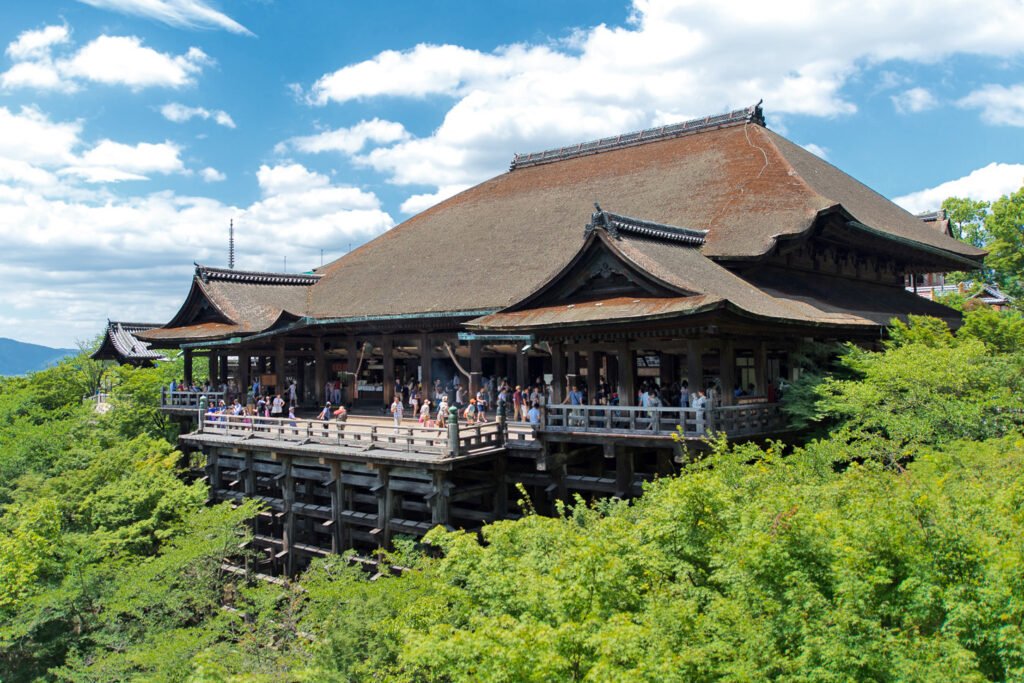15 Must-Do Activities for First-Time Visitors in Kyoto, Japan

Exploring Historical Temples and Shrines
Kyoto, often regarded as the cultural capital of Japan, is home to a plethora of historical temples and shrines that reflect the country’s rich heritage and architectural magnificence. Among these, Kinkaku-ji, more commonly known as the Golden Pavilion, stands out as an epitome of Zen architecture. This stunning structure, adorned with gold leaf, is set against a serene pond and a lush garden, making it a breathtaking sight throughout the seasons, with the best viewing times being early morning or late afternoon when the light is just right.
Another iconic site is Kiyomizu-dera, notable for its wooden stage that juts out over the hillside. This temple, which translates to ‘Clear Water Temple,’ dates back to the 8th century and offers visitors panoramic views of the cherry blossoms in spring and the vibrant foliage in autumn. The temple not only serves as a place of worship but also as an exemplar of traditional Japanese construction techniques, including its wooden architecture that incorporates no nails. For an enriching experience, partake in the temple’s water pouring ritual, which is believed to grant wishes and good fortune.
Fushimi Inari Taisha is yet another must-visit, renowned for its thousands of vermillion torii gates that create a stunning pathway up the sacred Mount Inari. This shrine, dedicated to Inari, the Shinto god of rice, is especially captivating in the early morning hours when the trails are less crowded. Visitors can engage in traditional practices such as offering prayers or purchasing an ’ema’ (a wooden plaque) to write their wishes and hang them within the shrine precincts.
To fully appreciate the spiritual atmosphere of these sites, consider joining guided tours that provide in-depth historical context, insights into architectural styles, and details about the various religious practices observed. It is also advisable to partake in early morning visits to these iconic structures, as they not only offer a more peaceful experience but allow for a deeper connection to the sacred traditions of Kyoto.
Strolling Through Traditional Districts
Kyoto is renowned for its captivating traditional districts, which offer visitors a unique opportunity to engage with the city’s rich history while experiencing its modern ambience. One of the most famous areas, Gion, is well-known for its historical associations with geisha culture. As you wander through the narrow streets, you may encounter stunning wooden machiya houses that showcase traditional architectural styles. These houses often house teahouses where one can partake in authentic tea ceremonies or simply enjoy the tranquil atmosphere.
Another significant district, Higashiyama, is characterized by its beautifully preserved blend of old and new. Visitors can stroll along the picturesque pathways lined with charming shops selling local crafts, artisanal products, and delectable street food. This area not only encapsulates Kyoto’s historical charm but also serves as a vibrant hub for local cuisine. Do take the time to sample regional delicacies such as yudofu (tofu hot pot) and matcha-based sweets at local eateries, providing a deeper connection to the culinary heritage of the region.
When exploring these districts, it is advisable to wear comfortable shoes as you may find yourself traversing steep paths and cobblestone streets. Moreover, plan your visit during early morning or late afternoon hours to avoid the crowds and to experience the elusive beauty of these areas in a more intimate setting. Keep a lookout for geishas gracefully navigating the streets, as spotting them is an iconic experience that epitomizes Kyoto’s enduring traditions. Engaging with the locals and partaking in traditional cultural activities will enhance your visit, helping you to appreciate the balance between preservation and modernization that defines Kyoto today.
Enjoying Kyoto’s Natural Beauty
Kyoto is renowned for its breathtaking natural beauty, which perfectly complements its rich cultural heritage. Among the most captivating outdoor attractions is the Arashiyama Bamboo Grove. Walking through this enchanting grove offers a unique experience, as towering bamboo stalks create a serene atmosphere, allowing visitors to immerse themselves in nature. The sound of the rustling bamboo leaves and the dappled sunlight filtering through the canopy contribute to a tranquil environment that is perfect for thoughtful reflection or photography. For an optimal visit, early morning is the best time to explore this iconic site, as it is less crowded and the morning light enhances the scenery.
Another must-visit destination is the Philosopher’s Path, a picturesque walkway lined with cherry trees and situated along a tranquil canal. This roughly two-kilometer-long path is best enjoyed during the cherry blossom season in spring, when the trees bloom spectacularly, creating a breathtaking tunnel of pink and white flowers. It is also charming in autumn as vibrant red and yellow leaves blanket the ground. Providing various viewpoints, the path allows visitors to engage with both nature and local culture, as numerous temples and shrines can be found along the route. Taking a leisurely stroll while enjoying the seasonal changes is highly recommended.
Lastly, the gardens at Nanzen-ji represent another highlight of Kyoto’s outdoor attractions. This historic temple complex features beautifully landscaped gardens that exemplify traditional Japanese aesthetics. Visitors can explore various contemplative spaces filled with lush greenery, tranquil ponds, and seasonal flowers. The autumn foliage transforms the gardens into a stunning array of colors, attracting many visitors seeking to enjoy the picturesque views. To fully appreciate the intricate artistry, it is advisable to visit during different seasons, as each offers a unique perspective on nature’s beauty in Kyoto.






0 Comment